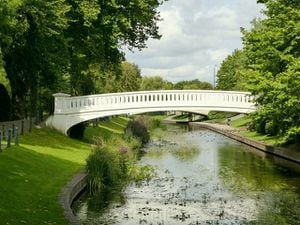Wooden eel stolen from Bridgnorth country park found on beach 100 miles away
A stolen 12ft wooden eel 'swam' south from near Bridgnorth and washed up on a beach 100 miles away.

The eel, which was one of several ripped from Severn Valley Country Park in Alveley and was part of a £4,500 children's walkway, was found on Portishead beach in Somerset.
The eels were stolen last summer only a year after they had been installed, prompting Alveley councillor Dave Tremellen to brand the vandals: "Utterly disgraceful," adding he was "angry beyond words."
Walkers at the beach were stunned to see the eel on the shoreline, made from a single trunk and still attached to its supports.

Michelle Lucking, a local seascape artist who spends a lot of time at the beach, found the eel.
She said: “It is possibly the biggest thing I’ve ever found washed up on the beach! It is absolutely stunning.
"We managed to move it above the high tide line and turned it into a makeshift bench for people to sit on and enjoy the sea.

"Once we realised where it was from it took five men from the RNLI to move it to safety.”
On June 30 last year the sculpture went missing overnight and, despite appeals and a police investigation, the whereabouts of the piece remained a mystery.
Michelle has set about reuniting it with its owners and said: “I have been in touch with the manager from Severn Valley Country Park who is organising collecting it.

"At some point it was placed in the River Severn where it spent 7.5 months migrating south before ending up at Portishead 100 miles downstream. It’s just so exciting that it has been recovered.”
The Eel was part of a project called “Unlock the Severn” aimed at building access routes for migratory fish through the locks and weirs of the river.





